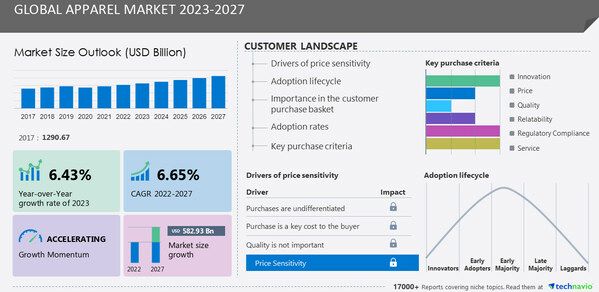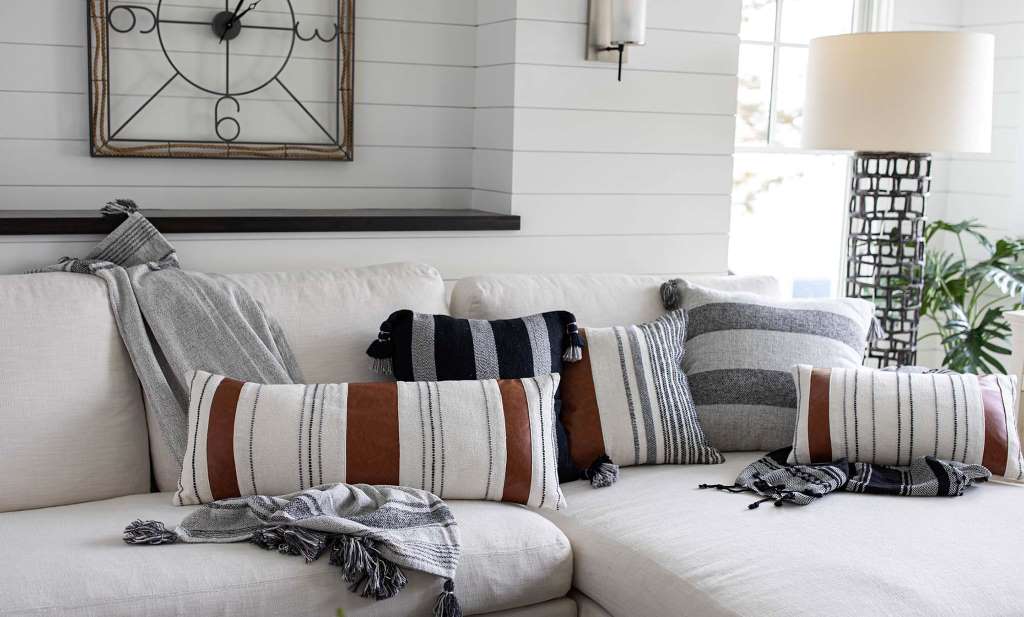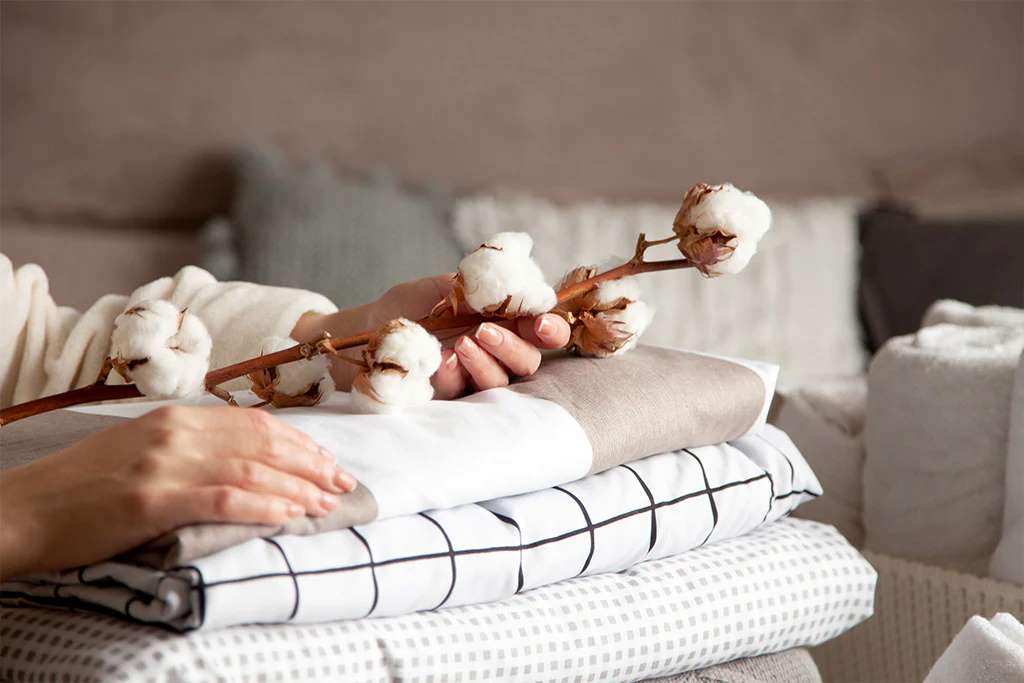FW
Decathlon plans to make an investment in the startup Recyc’Elit through its Decathlon Alliances structure to develop recycled products from textile waste.
Founded in 2019 in France, Recyc’Elit recycles complex polyester-based materials by sorting the fibers. The company now plans to build a prototype for this innovation by 2025.
Recyc’Elit aims to address the challenge of recycling complex textiles, such as polyester mixed with other fibers. Decathlon will purchase this recycled polyester from Recyc’Elit in the long term to maintain its competitive edge and participate in the textile recycling value chain.
The long-term business partnership between Decathlon and Recyc’Elit involves creating a value chain with all committed partners and producing capsule collections.
In October 2023, Recyc’Elit secured €3.2 million from Demeter via Crédit Agricole Création, business angels, the Fonds d’Amorçage Industriel Métropolitain (FAIM) Lyon – Saint Etienne, Banque des Territoires, and the French government as part of the France 2030 initiative.
Decathlon, which operates 1,700 stores, reported €15.6 billion in global sales in 2023, a 1.15 per cent increase, and a net profit of €931 million, up 0.9 per cent.
On 501 Day-the day the world’s first blue jean received its official patent, Levi’s commemorated the iconic blue jean's patent with oversized replicas of the pioneering riveted pant. Across the United States, the legacy brand revealed five pairs of Giant 501 Jeans, towering at 12 ft tall, approximately five times larger than standard pairs.
Every detail of these Giant 501 Jeans, from the Levi’s Red Tab to the stitched arcuate on the back pockets, leather patch, and shrink-to-fit fabric, faithfully replicates the original 501 design. While a typical pair of 501s requires 1.5 yards of denim weighing around 2 lbs., each Giant 501 Jean demanded about 15 yards of denim, weighing 20 lbs.
Crafted by Levi’s Eureka Innovation Lab, these innovations pay homage to the brand's heritage while showcasing advancements in technology and sustainability. While it typically takes an apparel technician at Eureka about two hours to make a standard pair of jeans, each Giant 501 Jean required three days.
The Giant 501 Jeans are now on display at select Levi’s stores: Brickell City Center in Miami, 5th and Broadway in Nashville, Victoria Gardens in Rancho Cucamonga, Calif., Easton Town Center in Columbus, Ohio, and Ala Moana in Honolulu.
This event reflects a growing trend of oversized denim displays, as seen earlier this year with the auction of a 12-foot-tall Levi’s display ad from the 1940s.
Additionally, a collaboration between Turkish mill Orta and Wouter Munnichs resulted in ‘The Biggest Sustainable Jeans,’ a 133x130 size jean made from 27 yards of sustainable fabric, paying homage to historical large denim displays from Levi’s, Wrangler, and Lee.
More than 35 Indian apparel exporters, primarily representing the MSME sector, are actively participating in the 17th edition of the International Apparel and Textile Fair (IATF) in Dubai. Under the guidance of the Apparel Export Promotion Council (AEPC), these exhibitors are dedicated to showcasing India's top-tier apparel designs in alignment with modern fashion preferences.
The event highlights a wide range of garments crafted from traditional cotton and man-made fibers (MMF), placing a significant emphasis on sustainability and promoting women entrepreneurship. This focus resonates with the UAE's designation of 2024 as the "Year of Sustainability," emphasizing the industry's commitment to eco-friendly practices and innovation.
Saurah Kumar, AEPC's General Manager, highlighted the deliberate inclusion of more women entrepreneurs and sustainability-driven companies this year. Indian exporters are enthusiastic about demonstrating their dedication to eco-friendly practices and innovative solutions that mitigate the fashion industry’s environmental impact.
Benefiting from duty-free access to the UAE market via the Comprehensive Economic Partnership Agreement (CEPA), Indian exporters are eyeing expansion, especially in the MENA region. The Indian Pavilion's inauguration by Consul General of India at Dubai, Satish Kumar Sivan, marked the event's commencement on May 20, concluding on May 22. AEPC, pivotal in policy advocacy and scheme formulation like production-linked incentives and RoSCTL, supports the Indian apparel industry's growth.
In the previous fiscal year, India's apparel exports surged to $16 billion, highlighting its robust presence in the global market. Notably, exports to the UAE accounted for $983 million, capturing a significant 15.8 per cent share of the country's garment imports.
The International Apparel and Textile Fair (IATF) Dubai, hosting over 400 exhibitors from 24 nations, stands as a key B2B fashion sourcing event in the MENA region. Positioned as a leader in sustainability, the Indian contingent at IATF Dubai leverages its rich textile heritage and commitment to eco-friendly manufacturing practices to attract discerning global buyers.
Spinners looking for sustainable and profitable mill operations should consider Uster FiberQ and RSO 3D systems, known for their attractive ROI and waste reduction capabilities. These systems will be showcased at ITM 2024, Booth 714B in Hall 7.
Effective raw material management can save 0.5 per cent to two per cent of waste, crucial since raw material costs account for six per cent to 75 per cent of cotton yarn production expenses. For a mill with 50,000 spindles, even a one per cent waste reduction can save USD 255,000 (€ 239,000) annually.
Uster FiberQ enhances raw material utilization through comprehensive software and hardware integration. It simplifies inventory management, ensures consistent laydowns, and improves quality and performance using data from the Uster HVI1000 system. Spinners report significant improvements, such as eliminating barré faults and achieving over 25 per cent better IPI quality.
The Uster RSO 3D system combines Uster Sentinel ring spinning optimization, Quantum 4.0 yarn clearers, and a linked winding machine, providing preventive quality control and traceability. It offers real-time quality mapping for each spindle, ejects outlier cops, and reduces winder stops, enhancing profitability.
Uster’s data-enabled software and expertise replace outdated methods, facilitating optimum yarn quality and performance daily. Investing in these advanced technologies supports long-term sustainability and profitability for textile mills.
The International Labour Organization (ILO) will convene its annual conference in Geneva from June 3rd to 14th. Representatives from 187 member states will tackle critical issues shaping the world of work.
A key focus will be "Renewing the Social Contract," exploring how to ensure fair labor practices and decent work opportunities. Discussions on biological hazard protection aim to establish new international labor standards.
The conference will also address the ongoing situation of workers in occupied Arab territories and the strategic importance of upholding fundamental worker rights.
Decent work in the care economy is another agenda item, highlighting the need for fair treatment in this growing sector.
Technical committees will delve into budget matters, application of existing labor standards, and potential abrogation of outdated conventions.
The World Day Against Child Labour will be observed with a special event celebrating 25 years of progress and charting a course towards its elimination.
Finally, the Global Coalition for Social Justice will hold its inaugural forum on 13 June, fostering collaboration to advance social justice worldwide.

The global apparel industry is thriving, with market size estimated at $1.36 trillion in 2024 as per Mordor Intelligence. This positive trend is expected to continue, with various reports projecting a healthy Compound Annual Growth Rate (CAGR) in coming years.
Various studies have estimated the market size at different levels. For example, Technavio estimated the global apparel market will to $582.93 billion from 2023 to 2027, at a CAGR of 6.65 per cent. Mordor Intelligence estimated the market will reach $1.78 trillion by 2029, at a CAGR of 4.63 per cent. On similar lines the Business Research Company estimated the market will reach $918.71 billion by 2028, at a CAGR of 6.9 per cent.
Share of various regions
While data on specific regions vary slightly between reports, a consistent trend emerges.
Asia-Pacific (APAC): Holds the largest market share, with estimates ranging from 39 per cent for Technavio to a significant portion not explicitly mentioned by Mordor Intelligence.
North America and Europe: Have established positions, but growth is expected to be slower compared to APAC.
South America and Middle East & Africa: Represent emerging markets with promising potential for future growth.
The Technavio report outlines various factors influencing the global apparel market. One major driver is shifting consumer preferences who demand comfort, sustainability, and ethically sourced clothing. Technological advancements is another growth dirver. Virtual try-ons, contactless shopping, and customization are shaping the industry. Evolving retail landscape is another factor. The rise of online platforms and omni-channel experiences is impacting consumer behavior.
What drives APAC market?
The Technavio report rightly identifies the APAC region as a major growth driver, contributing a projected 39 per cent to the global market expansion. Several factors have been catalyst for APAC's dominance.
Economic growth: Rising disposable incomes in countries like China, India, and Southeast Asia empower the middle class to spend more on apparel.
Youthful population: APAC boasts a young demographic with a strong interest in fashion trends, creating a vast consumer base.
Digital revolution: E-commerce giants like Amazon and Myntra are transforming the retail landscape, making apparel more accessible in APAC.
The global apparel market is poised for significant growth, with APAC leading the charge. A combination of economic factors, demographics, and technological advancements are shaping the market landscape across different regions. As sustainability concerns gain traction, the industry is likely to see further innovation in materials and production methods.

US home textiles imports the first quarter of 2024 showed signs of a rebound, sparking cautious optimism in the industry. However, lingering questions about long-term trends and country-specific variations paint a complex picture.
Shifting import trends
Compared to the lackluster performance in Q1 2023, there has been an increase in home textile imports for the first three months of 2024. Data suggests a rise of around 20 to 25 per cent when compared to Q1 2023 figures. This aligns with the overall import surge witnessed in the textile and clothing sector during the same period. However, a broader view paints a different story. Looking back at pre-pandemic levels, home textile imports in Q1 2024 still fall short. Industry reports indicate a decline of approximately 10-15 per cent compared to a robust Q1 2022
India maintains strong position, others show fluctuations
Examining import sources reveals a mixed bag. India, a major supplier of home textiles to the US, seems to have maintained its position. However, there are indications of a potential decline in import volume from India, mirroring the downward trend observed in the later quarters of 2023. This could be due to various factors, including increased competition from other Asian countries or fluctuations in global cotton prices, a key raw material.
Countries like Germany, known for high-quality and functional home textiles, reportedly witnessed an increase in imports during 2023. This could indicate a shift in consumer preferences towards specific styles or a strategic focus by European suppliers.
The future outlook for US home textile imports remains cautiously optimistic. The ongoing growth in the real estate market and rising disposable incomes are projected to fuel demand. This, coupled with the increasing focus on home improvement and aesthetics, could lead to a gradual rise in imports over the coming quarters.
However, the path won't be smooth. Geopolitical tensions, fluctuating raw material prices, and potential disruptions in global supply chains remain significant concerns. Additionally, the performance of the US dollar and consumer spending habits will also play a crucial role in shaping the import landscape.
The US home textile import scene in Q1 2024 reflects a period of transition. While there's a welcome increase compared to the recent slump, pre-pandemic levels remain elusive. A shift in import sources, with potential declines from traditional players like India, is also on the horizon. Looking ahead, a cautious optimism prevails, with the future course heavily dependent on various economic and global factors.

While India remains a global leader in cotton production, its exports of cotton fabrics and made-ups (excluding yarn) painted a mixed picture in FY23 compared to previous years. Value wise cotton fabrics & made-ups exports reached $ 6.81 billion in FY23, a slight decline from previous years.
The slight decline in cotton fabrics and made-ups exports might be a strategic shift. The Indian government aims to increase exports in the value-added segment of the textile industry. This strategy focuses on finished garments and technical textiles, potentially leading to higher export value despite a potential dip in fabric and made-up exports. Meanwhile, initiatives like Amended Technology Upgradation Fund Scheme (ATUFS) reforms and Market Access Initiative (MAI) schemes are likely contributed to some export growth. These schemes are aimed to incentivize investments in modern technology and improve market access for exporters.
Destination-wise performance
Bangladesh remains the top importer of Indian cotton fabrics and made-ups, accounting for over 34 per cent of total exports. Sri Lanka and Vietnam also witnessed significant growth in imports. However, exports to China, the second-largest importer, have declined. This could be due to factors like rising competition or changing trade dynamics. Perhaps, what works for Bangladesh is its proximity to India, competitive prices, and strong trade. In case of China, rising domestic production and potential trade tensions might explain the decline in exports to this market.
Looking ahead
Achieving the ambitious $100 billion textile export target by 2025-26 requires significant improvement in productivity and global competitiveness for India. For this, the way forward is skilling initiatives like SAMARTH and infrastructure projects like MITRA parks hold promise for future growth.
Table: Exports of cotton fabrics & made-ups
|
Year |
Cotton fabrics & made-ups exports ($ bn) |
Top importing countries |
||
|
FY23 |
6.81 |
Bangladesh, China (Decreased), Sri Lanka, Vietnam |
||
|
FY22 (estimated) |
6.5 (approx.) |
Bangladesh, China, Sri Lanka, Vietnam |
||
|
FY21 |
Not Available |
Bangladesh, China, Sri Lanka, Vietnam |
India's cotton fabrics and made-ups exports show promise, but a clear picture requires data for direct year-on-year comparisons. The government's strategic push towards value addition and focus on skilling the workforce could lead to a significant rise in exports in the coming years. However, to understand the full story, monitoring export trends across all major destinations and the impact of government policies is crucial.
Global Fashion Agenda (GFA) is urging fashion leaders to step up their sustainability efforts as the industry grapples with the escalating climate crisis.
To mark the 15th anniversary of its flagship Global Fashion Summit, GFA released a special edition of the Fashion CEO Agenda, a guide for fashion companies to achieve a net positive impact by 2050.
The 2024 edition emphasizes five key areas for improvement:
• Integrating sustainability with core business practices.
• Rethinking growth models to reduce resource consumption.
• Engaging consumers in sustainable practices and circular economies.
• Prioritizing worker well-being, diversity, and inclusion.
• Focusing on sustainable materials and production methods.
The Fashion CEO Agenda urges a shift in mindset, challenging traditional norms and metrics of success. It emphasizes collaboration, empathy, and a values-based approach that prioritizes people and the planet.
Federica Marchionni, CEO of Global Fashion Agenda, explained that the Fashion CEO Agenda 2024 aims to empower leaders to confront the challenges of building sustainable businesses. She emphasized the importance of collaboration and prioritizing both people and the planet.
GFA, through its events, programs, and publications, provides resources and best practices for the fashion industry. They encourage the industry to build on existing knowledge and embrace new opportunities to transform the entire fashion value chain.
Louis Vuitton has relaunched its Core Values campaign with a new chapter featuring tennis champions Roger Federer and Rafael Nadal. Renowned photographer Annie Leibovitz captured the duo atop a mountain in the Dolomites of Italy, embodying the campaign's tagline: ‘There are Journeys that turn into Legends.’
This latest installment in the Core Values series, initially launched 17 years ago by Antoine Arnault and Pietro Beccari, continues to celebrate the timeless principles that define Louis Vuitton.
To be featured in print and on Louis Vuitton’s social channels, the campaign depicts Federer with the classic Monogram Christopher backpack, while Nadal features with the Monogram Eclipse version.
Pietro Beccari, Chairman and CEO, Louis Vuitton, notes. each Core Values chapter celebrates Louis Vuitton’s legacy of travel, of working with exceptional people, and of transmission – both physical and emotional.












